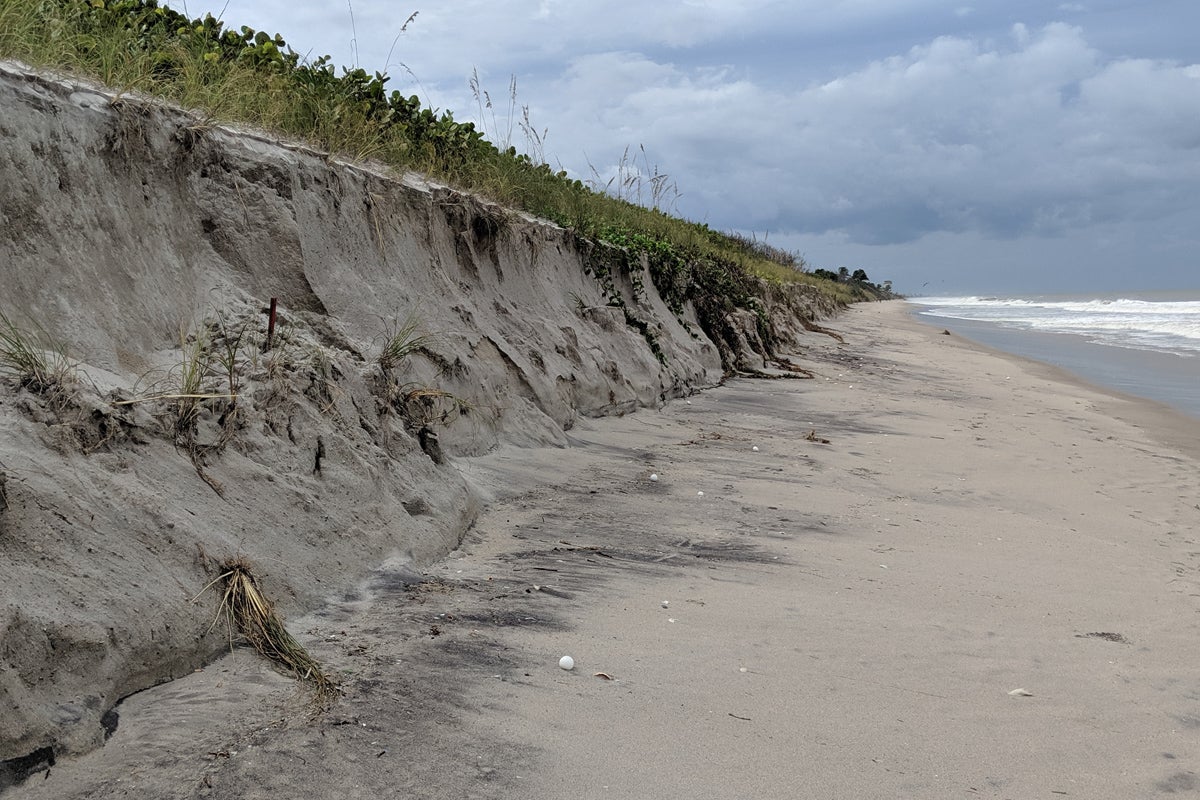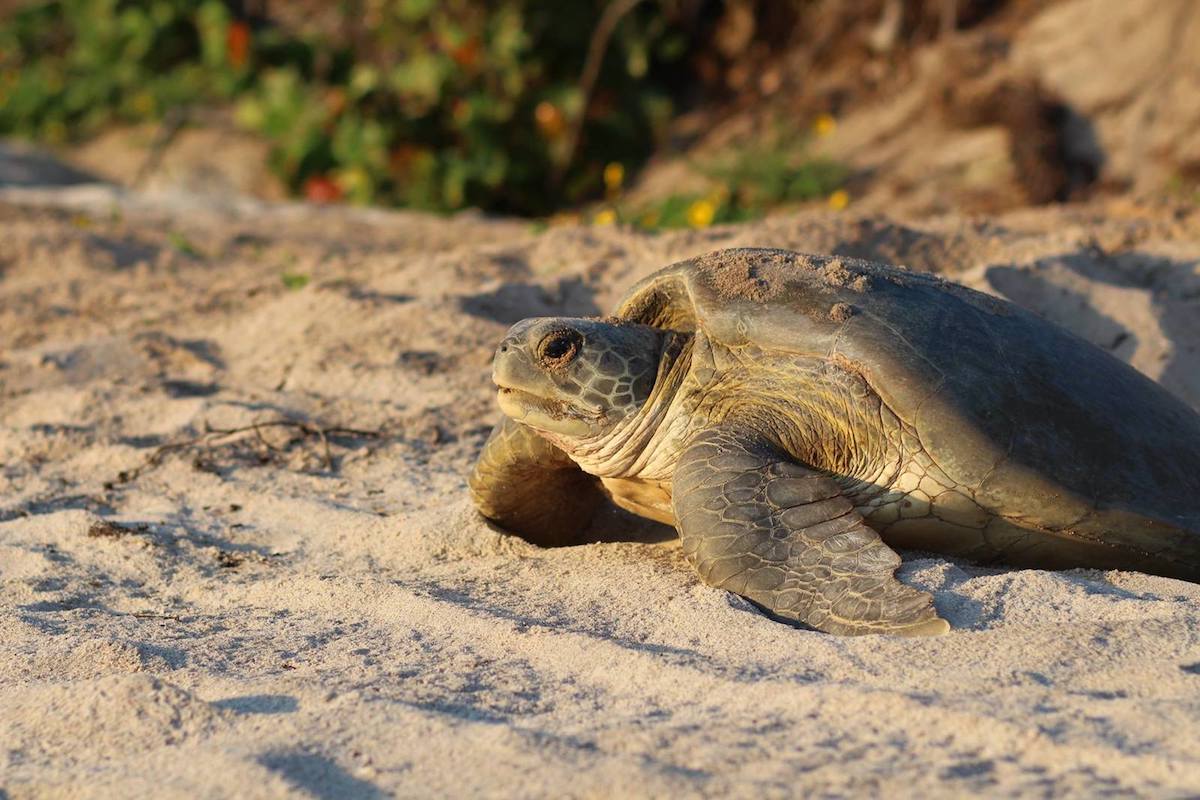At least 8,000 sea turtles nests washed away from the Brevard County portion of the Archie Carr National Wildlife Refuge earlier this month because of Hurricane Dorian, according to a University of Central Florida survey.
The refuge, which extends from southern Brevard County into Indian River County, is one of the most important nesting grounds in Florida for threatened and endangered sea turtles. Leatherback, loggerhead and green sea turtles are all known to use the refuge during their nesting season, which runs from March to October. UCF’s Marine Turtle Research Group has monitored the sea turtles on this beach and elsewhere on the Central Florida coast for decades, providing reliable information about the health and breeding habits of the turtles as a way to inform conservation efforts and provide scientific advisory service for beach and dune restoration.
“We’ve been out daily since the hurricane passed,” said Katrina Phillips, a doctoral candidate who is a senior member of the research group. “Based on our surveys of the Brevard portion of the refuge, we estimate that Dorian washed away about 20 percent of the loggerhead nests from this season and about 45 percent of green turtle nests from its season. That’s more than 8,000 nests.”
Most of the nesting turtles dodged a bullet. The peak of the season for leatherbacks and loggerheads had already passed by the time Dorian arrived, but it was just past prime hatching time for the green turtles.

“Hurricanes are never good for people or turtles,” says Kate Mansfield, a UCF biology professor and director of the research group. “But this one storm isn’t going to doom any of these species. We’ll have to observe and look at the total numbers at the end of the season before we can say definitively what the impact may be, but thankfully Dorian hit past the peak season for two of our three residents. The turtles will be back to nest again in future seasons.”
Phillips said the teams of students and scientists who have been conducting surveys on the beach saw green turtles laying eggs a day after Dorian passed and hatchlings heading into the sea have been observed.
By the numbers:
Leatherback (endangered)
Nest March to July
Nests before Dorian: 36
Estimated loss: 1
Loggerheads (threatened)
Nests April to September
Total nests before Dorian: 10,808
Estimated lost: 2,260
Green Turtles (threatened)
Nest May to October
Nests before Dorian: 15,305
Estimated lost: 6,700
If Dorian hat hit during the loggerhead’s peak nesting time, it could have been much worse. Loggerheads tend to nest on the beach in front of the dunes, which offers no protection against the pounding waves of a storm. Green turtles tend to nest a little higher on the beach, closer to the base of the dunes or in the dunes themselves.
“The green sea turtle season is still going strong,” Phillips said. “We’ve seen over 400 new green turtle nests since Dorian, and expect nesting to continue through October.”
Research faculty and student are still conducting surveys through October and will report final numbers to U.S. Fish and Wildlife Service, Florida Fish and Wildlife Conservation Commission, and other agencies.




